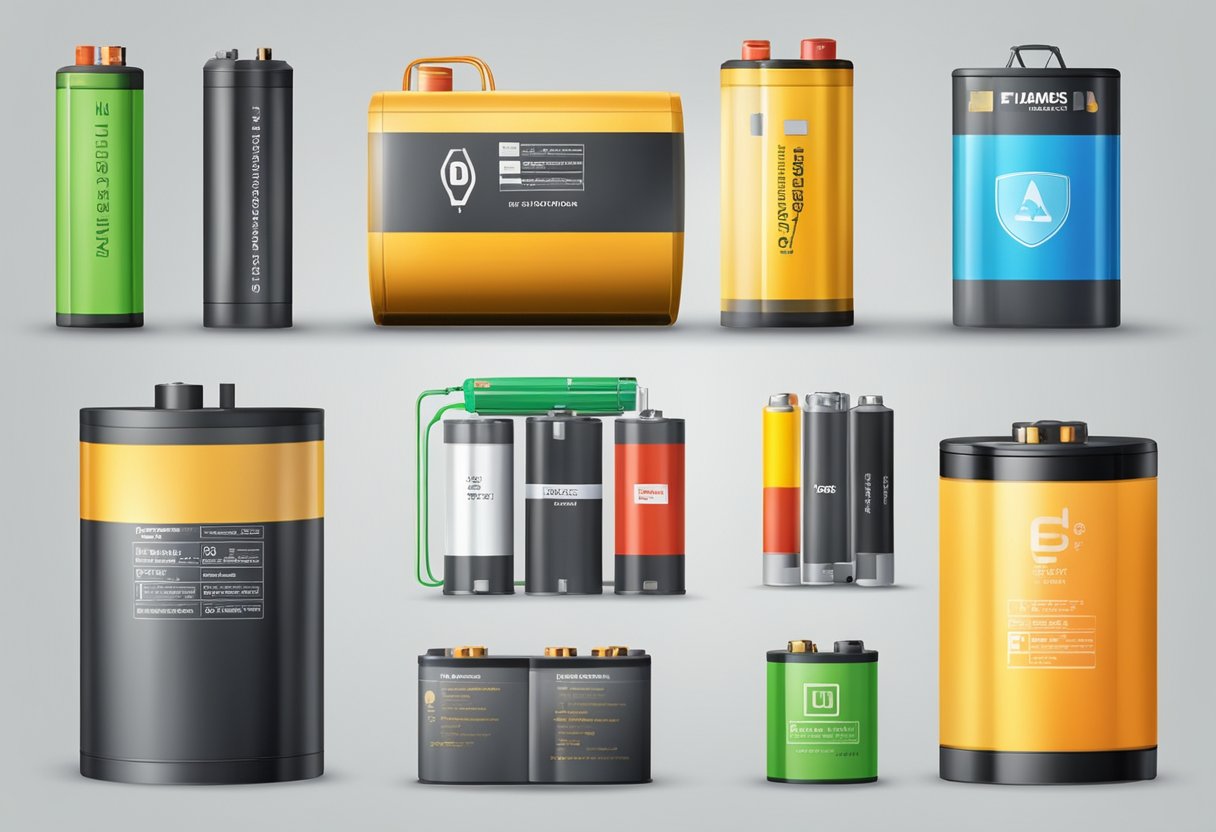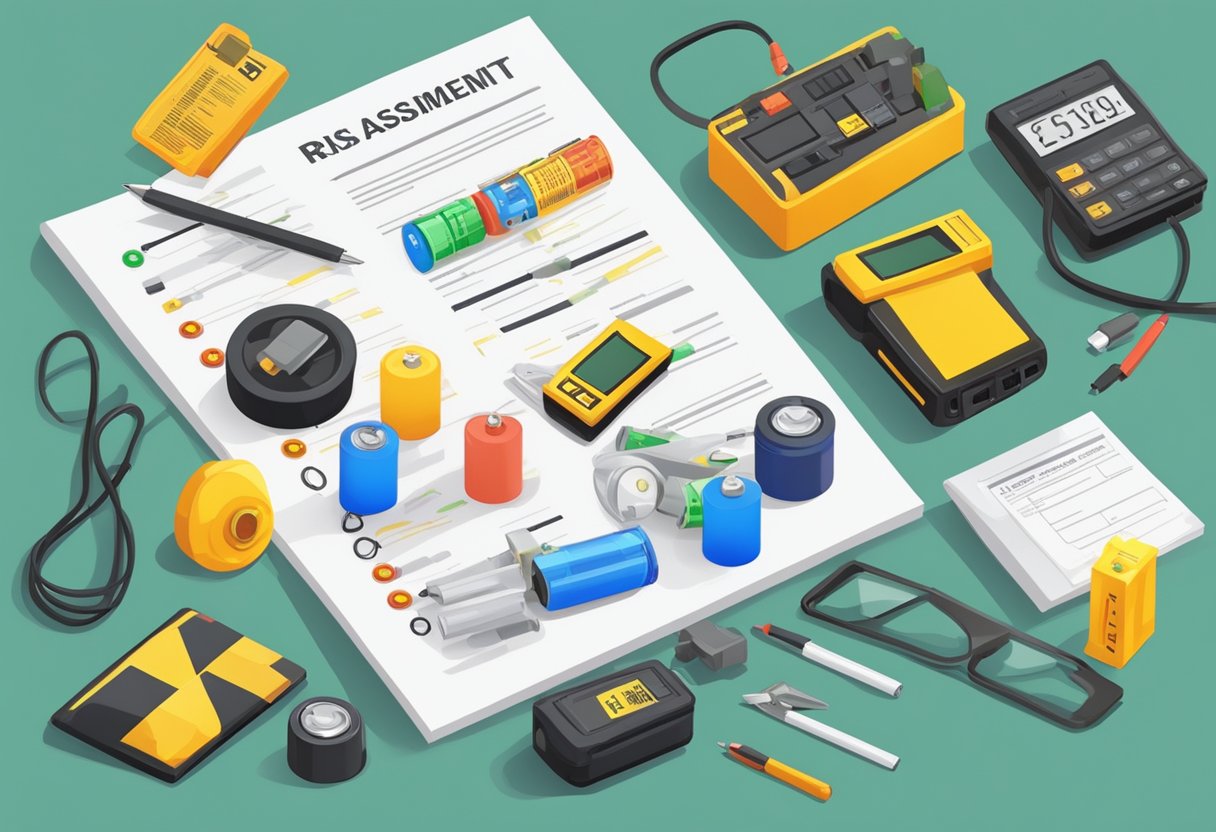Battery Hazard Screening: Importance and Methods
If you work with batteries, you know that safety is a top priority. Batteries can pose a range of hazards, from thermal runaway to electrical shock. That’s why it’s important to screen batteries for potential hazards before they’re put into use. Battery hazard screening is the process of identifying potential hazards associated with a battery and developing controls to mitigate those hazards.

There are a variety of methods that can be used to screen batteries for hazards. One common method is X-ray screening, which can be used to identify internal defects or damage that could lead to thermal runaway. CT scans can also be used to identify defects or damage. Vibration testing can be used to simulate the conditions that a battery might experience during transport or use, while self-discharge tests can be used to identify batteries that are prone to failure. Hazard screening is an essential step in the battery development process, helping to ensure that batteries are safe and reliable.
Battery Types and Associated Hazards

When it comes to battery hazard screening, it is important to understand the different types of batteries and the hazards associated with them. Here are some of the most common battery types and their associated hazards:
Lithium-Ion Batteries
Lithium-ion batteries are commonly used in electronic devices like smartphones, laptops, and tablets. They are lightweight and provide high energy density, but they can also be hazardous. One of the main hazards associated with lithium-ion batteries is the risk of thermal runaway, which can occur if the battery is damaged or exposed to high temperatures. This can lead to a fire or explosion.
Nickel-Cadmium Batteries
Nickel-cadmium batteries are commonly used in portable power tools and other high-drain devices. They are durable and can provide high current, but they also have some hazards associated with them. One of the main hazards is the release of cadmium, which is a toxic metal, during the manufacturing process. Cadmium can cause serious health problems if it is ingested or inhaled.
Lead-Acid Batteries
Lead-acid batteries are commonly used in vehicles like cars and trucks. They are reliable and can provide high current, but they also have some hazards associated with them. One of the main hazards is the release of lead, which is a toxic metal, during the manufacturing process and during use. Exposure to high levels of lead can cause health problems like anemia, weakness, and damage to the kidneys and brain.
It is important to understand the hazards associated with different types of batteries so that you can take appropriate precautions when handling and disposing of them. Always follow manufacturer instructions and guidelines for safe handling and disposal of batteries.
Risk Assessment for Battery Use

When working with batteries, it is important to be aware of the potential risks involved. A thorough risk assessment should be conducted to identify and mitigate these risks. This section will discuss the chemical, thermal, and electrical risks associated with battery use.
Chemical Risks
Batteries contain chemicals that can be dangerous if mishandled. For example, lithium-ion batteries can release flammable gases if they are punctured or damaged. To minimize the risk of chemical exposure, it is important to handle batteries with care and follow proper disposal procedures.
Table 1 shows some of the common chemicals found in batteries and their associated risks.
| Chemical | Risk |
|---|---|
| Lithium | Flammable; can cause thermal runaway |
| Lead | Toxic if ingested or inhaled |
| Nickel | Can cause skin irritation or allergic reactions |
| Cadmium | Toxic if ingested or inhaled |
| Mercury | Toxic if ingested or inhaled |
Thermal Risks
Batteries can generate heat during use, which can lead to thermal runaway if not controlled. Thermal runaway can cause the battery to catch fire or explode. To minimize the risk of thermal runaway, it is important to monitor the temperature of the battery and use appropriate cooling systems.
Table 2 shows some of the common causes of thermal runaway and their associated risks.
| Cause | Risk |
|---|---|
| Overcharging | Can cause thermal runaway |
| Overheating | Can cause thermal runaway |
| Short circuit | Can cause thermal runaway |
| Physical damage | Can cause thermal runaway |
Electrical Risks
Batteries can generate high voltages and currents, which can be dangerous if mishandled. Electrical shock can cause injury or death. To minimize the risk of electrical shock, it is important to handle batteries with care and follow proper safety procedures.
Table 3 shows some of the common electrical risks associated with batteries.
| Risk | Description |
|---|---|
| Electrical shock | Can cause injury or death |
| Arc flash | Can cause burns or blindness |
| Electromagnetic radiation | Can interfere with sensitive equipment |
| ESD (electrostatic discharge) | Can damage sensitive electronics |
By being aware of the potential risks associated with battery use and taking appropriate precautions, you can minimize the risk of injury or damage.
Safety Guidelines for Handling Batteries
When handling batteries, it is important to follow safety guidelines to prevent accidents and injuries. Here are some guidelines to keep in mind:
Personal Protective Equipment
When handling batteries, it is important to wear appropriate personal protective equipment (PPE) to protect yourself from potential hazards. This includes:
- Safety glasses or goggles to protect your eyes from acid and other chemicals.
- Gloves to protect your hands from acid and other chemicals.
- Protective clothing, such as a lab coat or apron, to protect your skin and clothing from acid and other chemicals.
Storage and Transportation
When storing and transporting batteries, it is important to follow these guidelines to prevent accidents and injuries:
- Store batteries in a cool, dry, and well-ventilated area away from direct sunlight and heat sources.
- Keep batteries away from flammable materials and sources of ignition.
- Do not stack batteries or place heavy objects on top of them.
- Use appropriate packaging when transporting batteries to prevent damage and leakage.
By following these safety guidelines, you can help prevent accidents and injuries when handling batteries.
Emergency Response to Battery Incidents
When dealing with battery incidents, it is important to have a clear plan of action in place to ensure the safety of everyone involved. This section will cover two important aspects of emergency response procedures for battery incidents: containment procedures and first aid measures.
Containment Procedures
Containment procedures are crucial in preventing the spread of fires and other hazards associated with battery incidents. In the event of a battery incident, it is important to follow these steps:
-
Evacuate the area: The first step in any emergency response is to evacuate the area to ensure the safety of everyone involved.
-
Isolate the battery: Once the area is evacuated, isolate the battery to prevent the spread of fire or hazardous materials.
-
Use appropriate fire suppression: Depending on the type of battery and the nature of the incident, appropriate fire suppression measures should be taken. For example, if the battery is a lithium-ion battery, water should not be used to extinguish the fire as it may react with the battery and cause an explosion.
-
Dispose of the battery: After the incident has been contained and the area is safe, the battery should be disposed of properly according to local regulations.
First Aid Measures
In addition to containment procedures, it is important to know how to administer first aid in the event of a battery incident. Here are some important first aid measures to keep in mind:
-
Remove any contaminated clothing: If the battery has leaked or exploded, remove any contaminated clothing immediately to prevent further exposure.
-
Flush affected area with water: If the battery has leaked or exploded, flush the affected area with water for at least 20 minutes to remove any hazardous materials.
-
Seek medical attention: If you or anyone else involved in the incident is experiencing symptoms such as difficulty breathing, dizziness, or nausea, seek medical attention immediately.
By following these containment procedures and first aid measures, you can help ensure the safety of everyone involved in a battery incident.






























